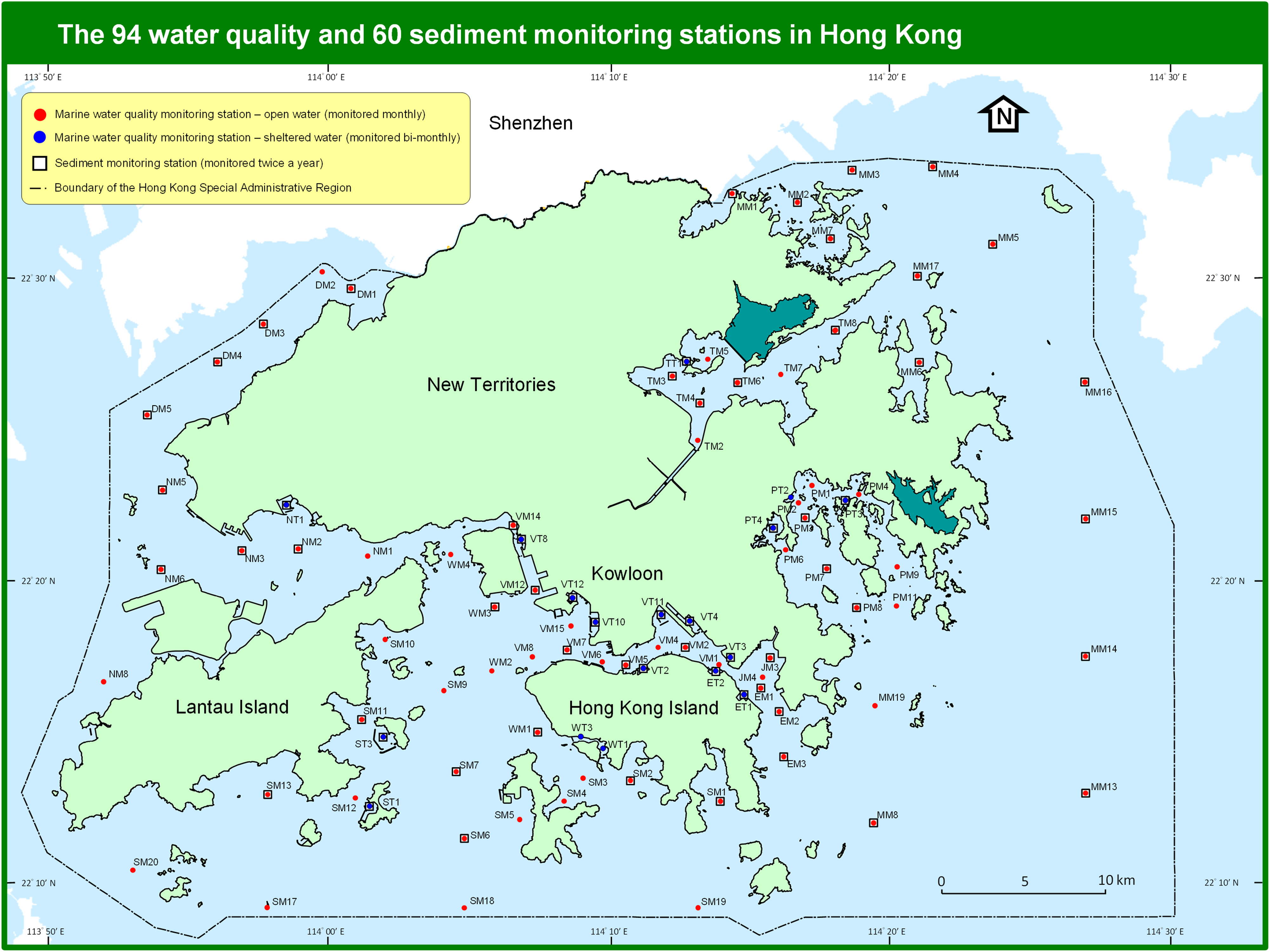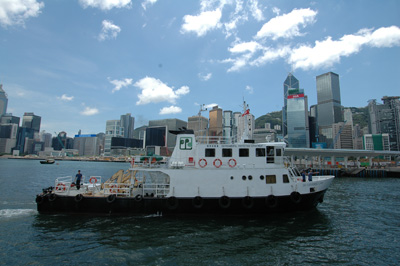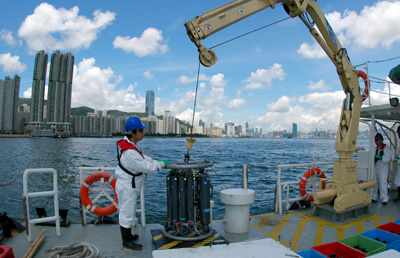|
Marine Water Quality Monitoring in Hong Kong
Marine Water - Our Valuable Resource
Hong Kong is a thriving port with a population of over 7 million people. It relies heavily on the sea for navigation, recreation, seafood production, and supply of flushing and cooling water. The sea surrounding us is also the home of diverse forms of marine life ranging from microscopic algae to dolphins. The Government is fully committed to protecting its marine environment.
The Environmental Protection Department (EPD) of the Hong Kong SAR Government monitors the water quality of some 1,640 sq km of the territory's marine waters. The monitoring programme serves the following purposes:
- evaluate the health state of marine waters;
- monitor long-term changes in water quality;
- provide a scientific basis for planning water pollution control strategies and evaluating their effectivesness; and
- assess the compliance with the Water Quality Objectives (WQOs).
Marine Water Quality Monitoring
Every month, the EPD monitors the marine water quality at 76 monitoring stations and collects and examines phytoplankton samples from 26 of these stations. We also monitor the water quality of 18 monitoring stations located in typhoon shelters, sheltered anchorages and Government Dockyard across Hong Kong bimonthly. In addition, sediment samples are collected and analysed at 60 stations, covering open and sheltered waters, twice a year.

Marine monitoring is mainly carried out on board a scientific vessel, the Dr. Catherine Lam, which is equipped with a satellite-aided differential global positioning system (DGPS) for accurate location of sampling stations at sea.

A range of physical and chemical parameters, including temperature, pH, salinity, turbidity and dissolved oxygen level, are measured in situ by a conductivity-temperature-depth (CTD) profiler and the data are relayed to a computer. In addition, water and sediment samples are collected and sent to the laboratories for analysis of some 40 parameters such as nutrients, metals, organics and coliform bacteria.

Water Quality Objectives
Hong Kong is divided into 10 Water Control Zones (WCZs) and each WCZ has a set of Water Quality Objectives (WQOs). The rates of annual compliance with the key WQOs (i.e. dissolved oxygen, unionized ammonia, total inorganic nitrogen and E.coli) are assessed based on all the data collected at 76 marine monitoring stations during the year.
| Parameter |
Objective |
Dissolved Oxygen
(depth-average) |
Not less than 4mg/L in 90% of the samples |
Dissolved Oxygen
(bottom) |
Not less than 2mg/L in 90% of the samples |
| Unionized Ammonia |
Annual mean not exceeding 0.021mg/L |
| Total Inorganic Nitrogen |
Ranging from annual mean of not exceeding 0.1mg/L in Southern Water Control Zone to not exceeding 0.7mg/L in the inner Deep Bay Water Control Zone |
| E.coli |
Annual geometric mean not exceeding 610/100mL in the Secondary Contact Recreation Subzone |
Summary of Water Quality Objectives (WQOs) for marine waters of Hong Kong
More Information on Marine Water Quality and Hong Kong's Environment
Detailed information on Hong Kong's marine water quality is found in the annual report Marine Water Quality in Hong Kong. This report is available in public libraries and Environmental Resource Centres, and can be downloaded from the EPD's Marine Water Quality Web Page. Other information on Hong Kong's environment can be obtained from the EPD's homepage (https://www.epd.gov.hk).
|